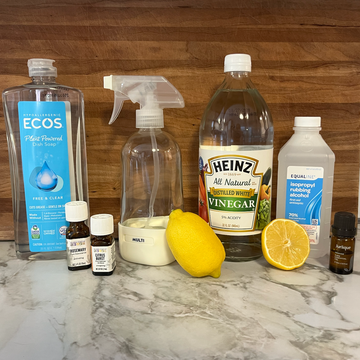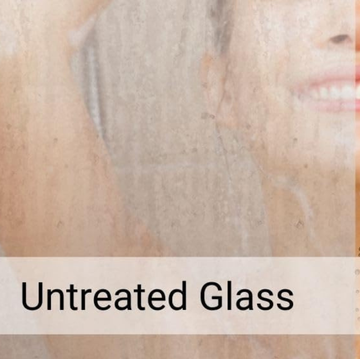After many washes, your towels and sheets might start to feel stiff, look dingy and discolored or lack absorbency. Before you toss them: Laundry stripping is known to remove that built-up residue, likely caused from too much detergent or fabric softener, hard water minerals or natural body oils.
Back in 2020, laundry stripping turned into an internet phenomenon and still, you'll find users experimenting with the method on #Cleantok. To put it simply, the cleaning method involves soaking textiles in borax. It often results in tubs filled with murky brown water — creating the illusion that the fabrics were much dirtier than expected, which isn't always the case.
Before you try the viral cleaning method, it's important to learn what exactly laundry stripping is and if the time-consuming process is safe for clothing and linens. To answer all of your questions about laundry stripping, we tapped Good Housekeeping Institute Cleaning Lab Executive Director Carolyn Forté, who shares her advice for doing laundry the right way.
What is laundry stripping?
Laundry stripping is a deep-cleaning method used to remove residue from fabrics. Buildup can come from natural body oils, minerals from hard water, fabric softener or leftover detergent that's become trapped in the fibers of clothing, towels or linens. The cleaning process is rather lengthy: Towels, sheets or clothing sit in a tub of hot water, borax, washing soda (sodium carbonate) and laundry detergent until the water has cooled completely — which is likely to take at least four hours.
How to strip laundry
What You'll Need:
- Fill your bathtub, sink or a large bucket with hot water. Add borax, washing soda (sodium carbonate — not baking soda) and laundry detergent in a 1:1:2 ratio. For a bathtub, add ¼ cup borax, ¼ cup washing soda and ½ cup laundry detergent. Stir until all three ingredients dissolve completely.
- Submerge "clean" towels or sheets in the mixture and soak until the water has cooled, which usually takes at least four hours. Stir them occasionally to help dissolve and release the buildup from the fabrics into the water.
- Drain the murky water, wring your items and run them through a full wash cycle without detergent or softener. If not a full wash cycle, put them through at least a rinse and spin cycle in your washing machine. Tumble dry the items without dryer sheets.
Things to avoid when laundry stripping
Avoid washing colored fabrics, delicate items and fabrics prone to shrinking with this method. Laundry stripping works best on whites, lights and colorfast bath towels and bed sheets that can be cleaned in hot water without fading. Always check an item's care tag — any item that requires a cold, cool or warm water wash may fade or shrink from the high temps required to laundry strip.
It's not recommended to soak colored textiles, because the dyes can run — which partly explains why the water often turns dark brown or gray during the stripping process. If you decide to soak colored textiles, don't combine them with whites to avoid accidentally transferring dye.
Is laundry stripping worth it?
We don't think so. While laundry stripping can be effective, you shouldn't have to strip towels and sheets on a regular basis if you're washing them correctly. Plus, the process of laundry stripping can be time-consuming and inconvenient. There are some instances where laundry stripping may be necessary, especially if you notice buildup after washing with homemade detergent, frequent use or over-use of dryer sheets or liquid fabric softener or you live in a hard water area and don't have a water softener installed.
How to avoid the hassle of laundry stripping
If you're able to prevent build-up in your fabrics, there's rarely a need for laundry stripping. Follow these smart laundry practices with each load:
- Use a deep-cleaning detergent, like GH Seal Star Tide Power Pods.
- Don't overload the washing machine. Items need room to move and circulate.
- Don't use too much detergent or fabric softener. Always measure and follow label recommendations based on the size of your load and how dirty it is. You can skip fabric softener or dryer sheets every few loads.
- If you see suds left in the washer tub, run a second rinse cycle.
- Use proper laundry sorting techniques to avoid depositing soil from one item to another. Wash very dirty items separately from less soiled ones.
- If you notice residue or want to prevent buildup, add borax, washing soda or a rinse, like Downy Rinse & Refresh, to a regular load during the wash cycle following the label directions for your size load and type of machine.
The bottom line, according to Forté: "If you have a lot of towels or sheets that need help, laundry stripping is a good way to tackle them quickly. Make sure to follow good laundering habits afterward, so you don't have to do it again!"

Amanda Garrity is a lifestyle writer and editor with over seven years of experience, including five years on staff at Good Housekeeping, where she covered all things home and holiday, including the latest interior design trends, inspiring DIY ideas and gift guides for any (and every) occasion. She also has a soft spot for feel-good TV, so you can catch her writing about popular shows like Virgin River, Sweet Magnolias, Hallmark Channel’s When Calls the Heart and more.
Alyssa Gautieri (she/her) is the associate lifestyle editor for Good Housekeeping, where she covers all things home and interior design. Prior to joining GH in 2022, she wrote for publications including ELLE Decor, Chairish, BobVila.com, Unique Homes Magazine and LODGING Magazine, in addition to crafting product copy for home brands like BrylaneHome and VIGO Industries.












